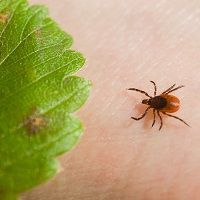Article
Biodiversity Tied to Disease Risk
Author(s):
A recent study indicated that the diversity of animals which control parasite populations-such as dragonflies, damselflies, and aquatic bugs-influences the rate of disease transmission to humans and wildlife.

A recent study indicated that the diversity of animals which control parasite populations—such as dragonflies, damselflies, and aquatic bugs—influences the rate of disease transmission to humans and wildlife.
Reported in the Proceedings of the National Academy of Sciences (PNAS), a team of researchers from the University of South Florida (USF) looked at how predator diversity influenced disease transmissions via parasites.
Lead Author Jason Rohr, an associate professor in the Department of Integrative Biology at USF, and his colleagues modified larval dragonflies and damselflies’ genetic diversity and population. These organisms, which typically ingest parasitic trematodes, typically infect tadpoles.
Through a series of follow-up experiments, field data, and mathematical models, they found intraguild (IG) predators—species that eat both the parasite and its host—manage infections less efficiently than predators that only consume parasites. The authors wrote that this trend indicates predators have natural predisposition to reduce disease.
Moreover, the investigators also discovered that IG predators’ genetic diversity did not modify the rate of infection in amphibians, but an increase in non-IG predators’ genetic variation was linked to a decrease in infections.
"In the last century, there has been an unprecedented, global increase in infectious diseases and a concomitant decline and homogenization of biodiversity,” Rohr said in a news release. “The controversial 'dilution effect hypothesis' suggests that the two phenomena might be linked, or that biodiversity often decreases disease risk.”
The diversity of host species has been consistently investigated. However, researchers claimed their findings call attention to the effectiveness of modifying predator variety to manage diseases that affect humans and wildlife, a typically unexplored tool.
"We hope to have improved the management of pests and wildlife and human parasites by providing decision makers, wildlife managers, and farmers with guidance on how to manipulate predators to reduce pests and disease," Rohr said.


